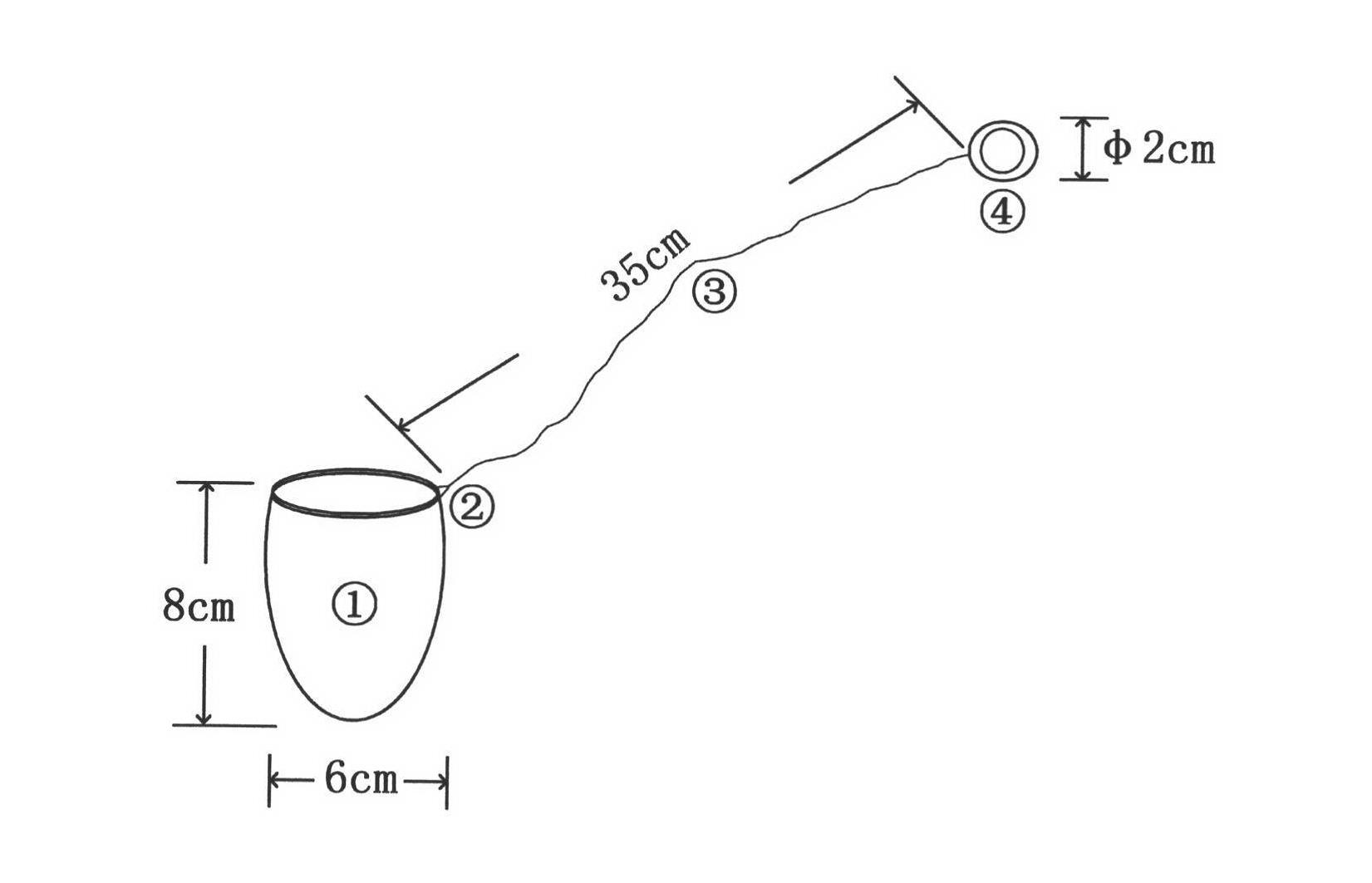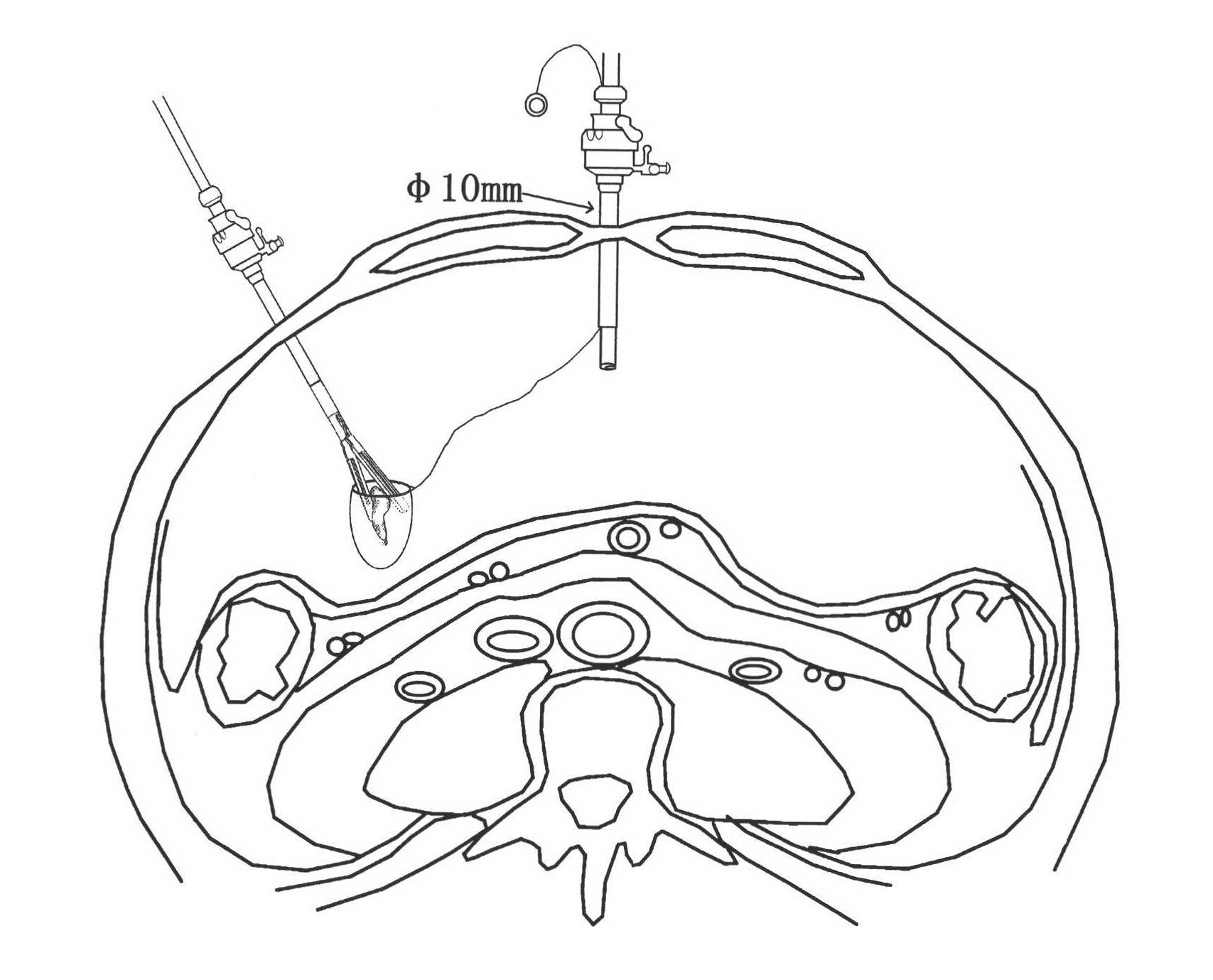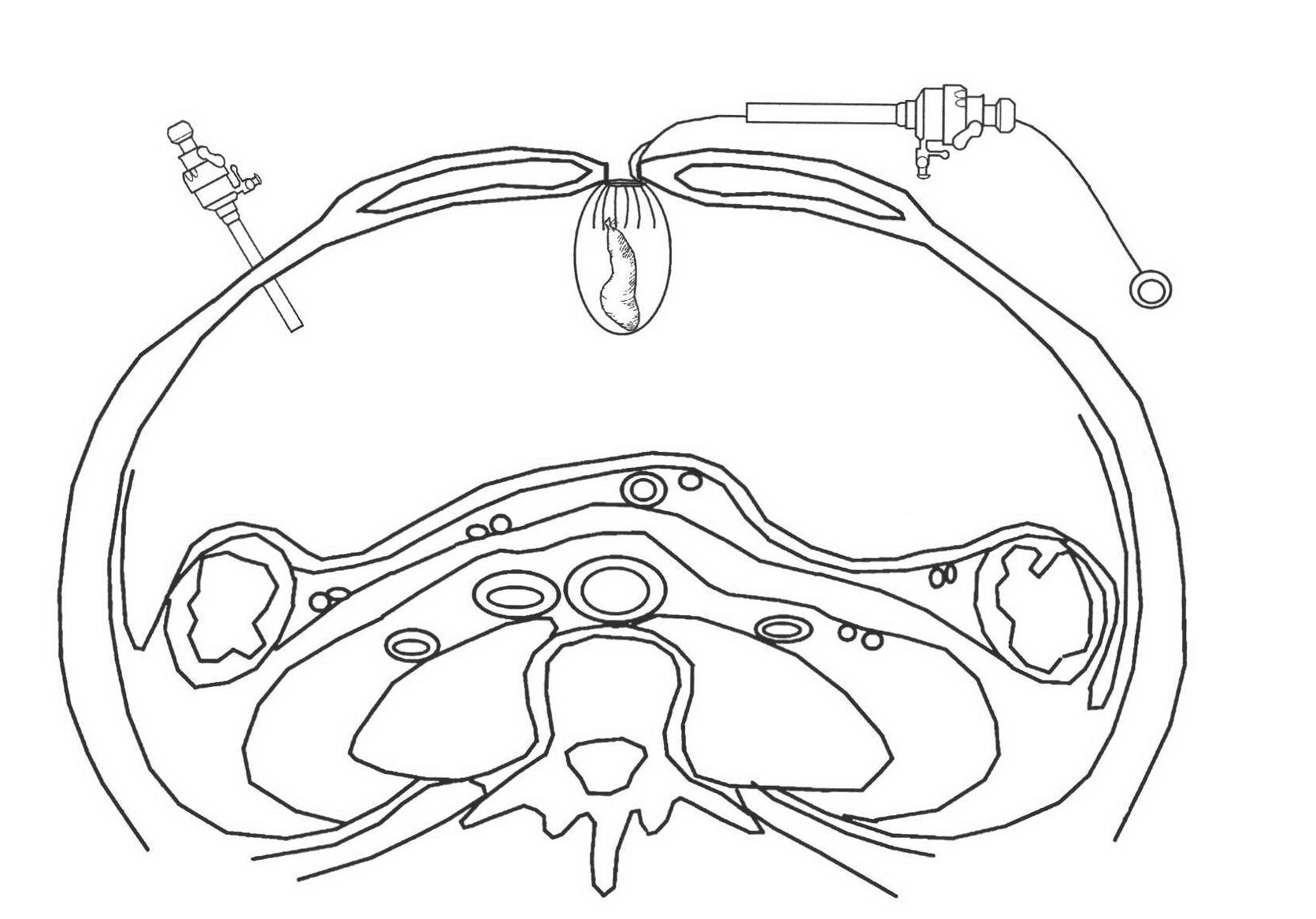Specimen extraction bag for laparoscope operation
A technique of specimen bag and laparoscopy, which is used in surgery, surgical forceps, diagnosis, etc., can solve problems such as difficulty, complicated operation, rupture of specimen bag, etc.
- Summary
- Abstract
- Description
- Claims
- Application Information
AI Technical Summary
Problems solved by technology
Method used
Image
Examples
Embodiment Construction
[0009] In laparoscopic surgery, the specimen bag ( figure 1 ) into the abdominal cavity with instruments through a 10mm cannula after being folded, and the rope tail with a ring is left outside the abdominal cavity through the cannula. Laparoscopes or other instruments can still be placed in the cannula without affecting the operation. Small specimens are placed in specimen bags ( figure 2 ), pull the tail of the rope to tighten the bag mouth, and pull the tail of the rope while pulling out the sleeve, and lift the specimen bag out of the abdominal cavity through the small incision of the sleeve ( image 3 ).
[0010] figure 2 In the example shown, the specimen bag is placed into the abdominal cavity through a 10mm cannula, and the rope tail with a ring is left outside the abdominal cavity through the cannula. A laparoscope or other instruments can still be placed in the cannula, and small specimens can be removed under the laparoscope. into the specimen bag, image 3 In...
PUM
 Login to View More
Login to View More Abstract
Description
Claims
Application Information
 Login to View More
Login to View More - R&D
- Intellectual Property
- Life Sciences
- Materials
- Tech Scout
- Unparalleled Data Quality
- Higher Quality Content
- 60% Fewer Hallucinations
Browse by: Latest US Patents, China's latest patents, Technical Efficacy Thesaurus, Application Domain, Technology Topic, Popular Technical Reports.
© 2025 PatSnap. All rights reserved.Legal|Privacy policy|Modern Slavery Act Transparency Statement|Sitemap|About US| Contact US: help@patsnap.com



